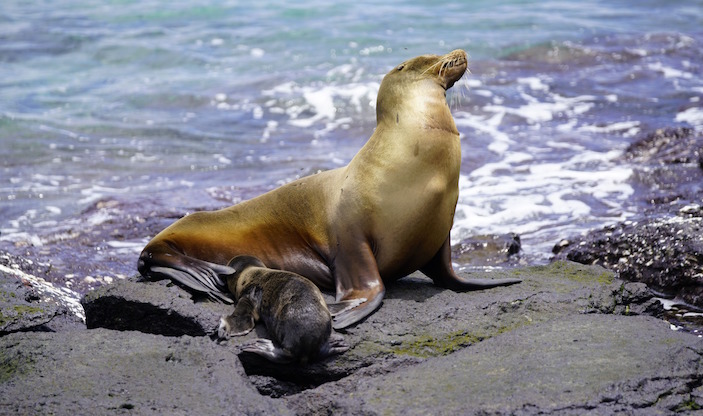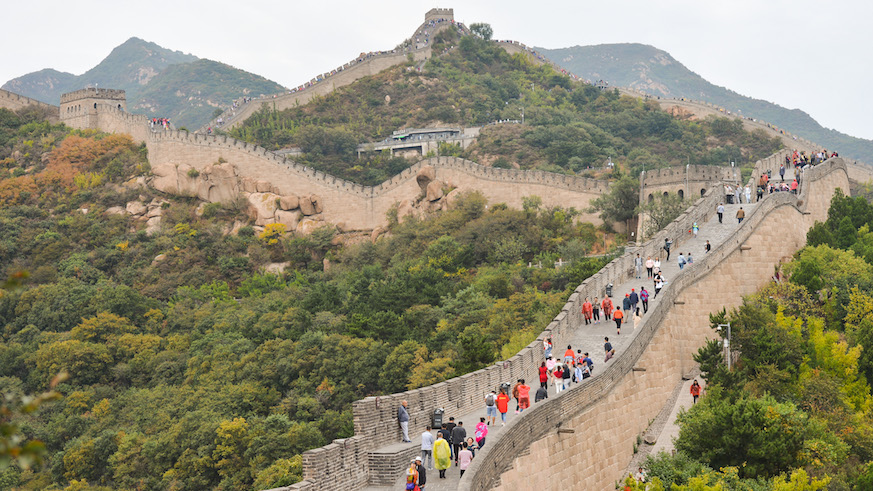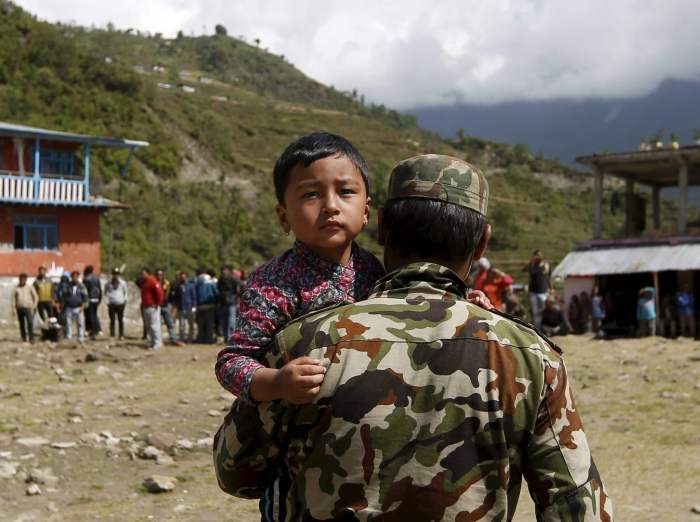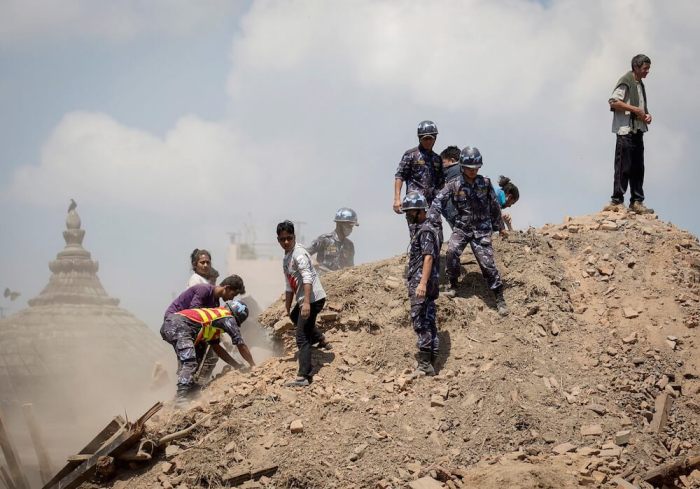We believe that this world is worth exploring, but we’re also stewards of this land. This planet offers an abundance of majestic vistas and fascinating culture that we recommend you seek out often. But this world is also more than a static viewing point — as travelers, we are witness to the many misfortunes that happen upon it.
Fodor’s No List is a reflection of those considerations: where should we go — or not go — that best reflects our courtesy and concern for this wonderful world. Because sometimes you have to say no to the ones you love in hopes that they can recover, reconsider, or reform. A “no” in 2018 is resolved with faith for 2019. See you then, hopefully.
The Taj Mahal
Anyone who’s taken the time to craft a bucket list has probably placed the Taj Mahal pretty close to the top. But as with any great beauty, there’s upkeep involved.
The Archeological Survey of India determined that the Taj Mahal’s dome (as well as four minarets) would undergo mud-pack therapy in order to correct the surface’s yellowing. Originally, this was to be wrapped up by March of 2018 but now officials are saying that work won’t begin until March of 2018. So unless your dream Taj Mahal visit involves being photographed standing in front of a mud-caked and be-scaffolded dome, maybe give it until 2019 at the earliest.
The Places That Don’t Want You to Visit
Sometimes, the economic boon brought in by tourist dollars just isn’t worth the strain it puts on the destinations themselves. Two notable destinations: Venice recently banned the docking of cruise ships because of the damage they do to the lagoon’s ecosystem. Peru has limited the amount of time people are allowed to visit the site of Machu Picchu.
Phang Nga Park, Thailand
Let’s try a magic trick. Close your eyes, and think of a tropical beach vacation in Southeast Asia: the water is emerald green and there are dozens of tiny islands with secret coves, and even sea caves with white sand beaches, perfect for a picnic lunch. Now open your eyes. You’re thinking of Thailand, and probably a group of islands that looks a lot like Ao Phang Nga National Park.
The rush to paradise has overwhelmed the islands, causing Thailand’s government to create a rating system for its beaches. While many beaches are recovering, scoring high in the 5-star ratings, Ao Phang Nga National Park desperately tries to recover from its manmade threats: tourists who feed fish, pollute coral reefs, and catch marine life, to name a few.

The Galápagos
The Galápagos Islands are unlike anyplace else in the world. They’re home to species of flora and fauna that can’t be found anywhere else on Earth. But the centuries of extreme isolation that resulted in the archipelago’s many unique species have left them very vulnerable to outside factors. The Ecuadorian government has enstated incredibly strict laws to preserve the fragile marine and terrestrial ecosystems from human and, more specifically, tourist interference. But even if you follow the rules to a tee, seeds or tiny insects still find a way to reaching the islands and wreaking havoc.
Myanmar
Myanmar is an incredible place–we selected it for the 2013 Go List for its unbelievable sights (a temple complex completely covered in gold and diamonds, said to enshrine eight hairs of Gautama Buddha), charming festivals (the new year is ushered in with a three-day-long, country-wide water gun, balloon, and gallon-bucket fight), and rich history, flora, and fauna (Marco Polo said he spotted a unicorn in the lush jungle here, which is also home to elephants, tigers, leopards, and rhinoceros).
But since August 25, the UN has labeled the human rights violations by Myanmar’s military as a “textbook case” of ethnic cleansing. What is happening to the Rohingya, members of a local ethnic Muslim minority, has been described as “horrific” and compared to the Rwandan genocide. In the past few months, 600,000 have fled to neighboring Bangladesh to a camp that is growing so quickly it can be seen by satellite.
Mt. Everest
If you’re a reasonable person, there are already plenty of reasons to eschew the world’s highest point for slightly lower peaks to conquer. There’s the price tag, which’ll run you $25,000 on the low end and about $45,000 on the high. Then, there’s the danger. While there’s no shortage of the number of precautions, it’s still a perilous trek–the mountain claimed 6 lives in 2017 alone.
Indeed, it’s possible climate change and the subsequent melting of snow and ice (which makes the trek less stable and possibly more susceptible to avalanches) may be rendering Mt. Everest more dangerous than ever.
Missouri
The Show-Me State is full of wonders that belong on anyone’s travel bucket list. It’s home to breathtaking limestone caverns, the Budweiser Clydesdales, Kansas City-style BBQ, great jazz, the Silver Dollar City Amusement Park, and even a museum that purports to house the holy finger of John the Baptist.
Unfortunately, Missouri is also the place where SB 43 was passedmaking it more difficult to sue employers for discrimination, a state representative argued that homosexuals weren’t human beings, a tourist who got lost and ran out of gas was later found murdered in his jail cell without ever being put under arrest, and two men were hunted down and shot on suspicion of being Muslim on the outskirts of Kansas City. And that’s just in 2017.
Those are just a few of the startling headlines from the state that prompted the Missouri chapter of the NAACP to advise tourists to skip this state and the “looming danger” for visitors when they’re touring United States.
Honduras
Did you know that Honduras has some of the best diving in the world? It’s inexpensive, and one of the only places to see endemic baby whale sharks, manatees, and breathtaking expanses of coral reefs. It’s also home to tropical rainforests, mangroves, and wildlife you can’t spot anywhere else in the world.
Sadly, when Honduras makes headlines it’s more often for its murder rate. Not only does Honduras have one of the highest murder rates in the world, members of the LGBTQ community are one of the most common targets. And police officers are the “primary perpetrators” of those murders.
Great Wall of China & Beijing, China
The Great Wall of China’s status as one of the Seven Wonders of the World is indisputable. With a more recent archaeological study determined that the wall is 13,000 miles long (for reference, the continental U.S. is 2,680 miles wide) it’s perhaps the foremost architectural feat in the world. And yet, at the current rate, it’s in danger of going the way of such Seven Wonders of the Ancient World as the Colossus of Rhodes and the Lighthouse of Alexandria.
Despite having survived for nearly two millennia, the Great Wall is under threat from a number of sources — mining, erosion, graffiti, construction, and even rural farmers who have taken to turning the structure into shelters and fertilizer. Oh, and that all too omnipresent force of destruction — tourism overload.
The sections of the wall that are best preserved can be accessed via Beijing … which might make for a better destination once its plan to reduce the city’s overwhelming smog has had time to result in more lung-friendly conditions.
Cuba
Politics have all but made it impossible to keep track of the rules for Cuba travel, with the latest State Department issue prohibiting American access to the country’s malls, shops, marinas, and hotels on the island. But if you’re not ready to give up your dream of touring Old Havana in a pink 1952 Chevrolet deluxe, spotting flamingos or crocodiles in the famously beautiful wetlands, or doing the mambo in the street to the sound of Cuban drums, you still have options.
Flying to Cuba is still legal and several government-sanctioned tour companies are allowed to take US citizens who fill out the proper paperwork on US-government approved cultural tours. Under the supervision of a minder, you will be taken to legal hotel accommodations and taken to see all of the government-approved sites on the island. Exploring a place means embracing its true culture, a frustratingly low priority of the US government’s agenda.



















